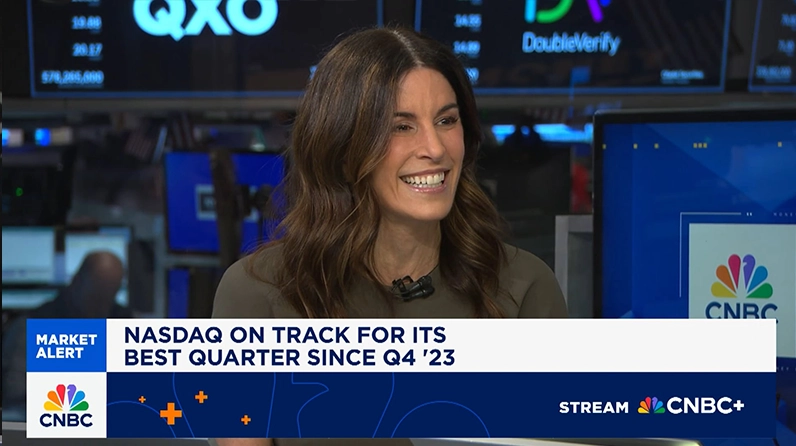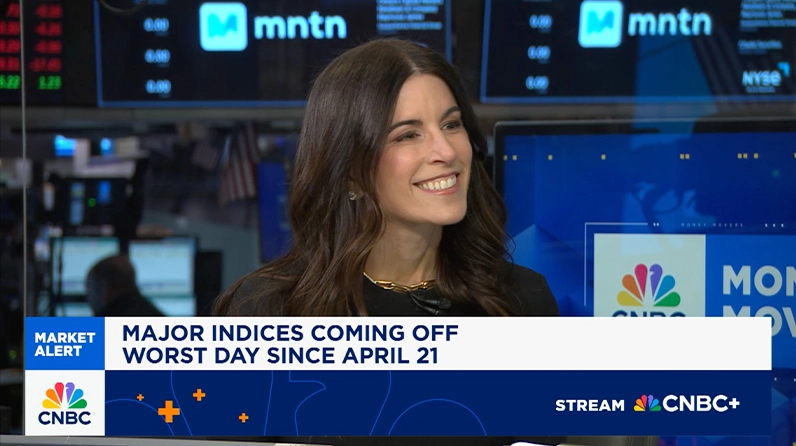

We encourage clients to take advantage of market fluctuations to deploy cash in a thoughtful manner and to reallocate back to strategic long-term allocations while being mindful of the opportunities in small cap, non-U.S. equities, and private markets
April’s non-farm payrolls release was met with a sigh of relief as it came in well above consensus expectations, up +177k versus the consensus estimate for +138k, and a number of strategies who had penciled in a print well below +100k. Driving the print were continued gains in health care (+51k) as well as job adds in financial activities (+14k), construction (+11k), and government (+10k). Gains in government were once again at the state and local level as federal employment fell -9k. Interestingly, there was a surge of hiring in transportation & warehousing (+29k) but declines in both manufacturing and retail trade – all three of which are likely tariff influenced. Despite the top line beat, however, revisions to February and March payrolls netted to a decrease of -58k versus the previously reported prints, bringing the year-to-date average to +144k, a modest decline from the +168k average in 2024.
As the Fed expresses concerns about an inflation surge, it was encouraging to see wage growth up only +0.2% month-over-month and +3.8% year-over-year, while average hours worked were steady (after the March revision) at 34.3. Employed persons rose by +436k while unemployed persons rose by only +82k, and individuals employed part time for economic reasons declined by -90k. The unemployment rate was stable at 4.2% even as the participation rate rose to 62.6% from 62.5%.
The report follows several employment data points this week that shed light on what might be on the horizon for U.S. jobseekers. Weekly jobless claims, which tend to be more forward looking than other employment measures, moved meaningfully higher for the week ended April 26, with new filings totaling 241k, 18k higher than the previous week and well ahead of the 225k estimate. Admittedly the gain was concentrated in claims from New York State and may be attributable to the recent school vacation week. However, continuing claims, which correlate more closely with the longer-term health of the labor market, were also higher by +83k to 1.92 million, marking the highest level since November 2021.
Challenger data, too, painted a less than rosy picture, as layoff announcements totaled 105.4k for April; admittedly, the figure was down from 275.2k in March and 172k in February, and was concentrated in the government and not-for-profit sectors. Also more constructive was the ISM Manufacturing PMI index’s employment measure which indicated an improvement to 46.5 from 44.7 in March despite a slight deterioration in the overall manufacturing picture.
Evidence of labor market stability is likely to offset, at least in today’s trading session, some of the skittishness in the equity and fixed income markets following Wednesday’s U.S. GDP release. Q1 2025 U.S. GDP fell by -0.3% on annualized basis, down significantly from +2.4% in the fourth quarter. The decline was led by an increase of +41.3% in imports, as companies acted aggressively ahead of the potential impact of expanded tariffs. Federal government spending declined by -5.1% following a +4.0% increase in Q4. Prices were also higher, as core PCE was up +3.5% from +2.4% in Q4, stoking stagflationary concerns. More constructive were the increases in business investment of +9.8% and consumer spending of +1.8%, which although was down from +4.0% in Q4, was still strong especially given the dour consumer confidence readings during the period. The caveat is that these stronger components are likely to weaken in the second quarter, particularly without further clarity on U.S. trade policy.
While one can take some comfort that today’s release was not as bad as feared, our view is that both the non-farm payrolls print and the GDP print are unlikely to meaningfully assuage concerns about tariff disruption, given both the timing of the Liberation Day announcement and the subsequent delay in implementation. Business confidence remains low, and there is little incentive to invest against the still very uncertain backdrop. Importers are likely to exhaust their inventories quickly given the sharp decline in shipments coming into U.S. ports and U.S. consumers are going to be faced with higher prices on goods that may become scarce as supply chains are adjusted. Successful negotiations and a clear path towards a rollback of most of the retaliatory tariffs announced on April 2nd are likely necessary to shift sentiment more meaningfully. In addition, focus will shift in part to Congress as the stream of information pertaining to the extension and expansion of the 2017 Tax Cuts & Jobs Act is likely to turn into a torrent and questions about the Fed’s next move and how the Treasury will approach the next duel with the debt ceiling will further shape the narrative.
Equity markets are responding positively to today’s print, as it indicates that the U.S. labor market is entering this period of slowing economic growth from a strong starting point; yields are up modestly as well, with more movement on the long end of the curve. In terms of positioning, we are encouraging clients to continue to take advantage of the market fluctuations to deploy cash in a thoughtful manner, particularly given the volatility, and reallocate back to strategic long-term allocations, mindful of the opportunities we believe are available in small cap and non-U.S. equities as well as private markets. We also believe that this is an excellent time to review the approach to concentrated or low-cost basis positions, as recent declines – some of which have been well in excess of the broad market for certain names – could afford greater flexibility in crafting a multifaceted solution to further diversify portfolios and to mitigate unwanted idiosyncratic risk.


VIDEO
Holly Newman Kroft Discussed Current Market Environment on CNBC

MARKET COMMENTARY
May’s Markets in Full Bloom

INSIGHTS
CIO Notebook: U.S. Non-Farm Payrolls Just Good Enough to Calm Investors

INSIGHTS
Alert: Current U.S. Tax Proposals

VIDEO
Holly Newman Kroft Featured on CNBC’s Money Movers

INSIGHTS
April Inflation Showing Few Signs of Tariff Related Acceleration

INSIGHTS
Our Advisors Ranked in “Barron’s Top 100 Financial Advisors” List for 2025
INSIGHTS
Our Teams Ranked in “Barron’s Top 250 Private Wealth Management Teams” List for 2025
INSIGHTS
CIO Notebook: Fed Acknowledges Higher Uncertainty and Increased Risk While Holding Rates Firm
MARKET COMMENTARY
Buckled Up for April’s Market Ride
INSIGHTS
CIO Notebook: U.S. Non-Farm Payrolls Provide Comfort as Negotiations Continue
VIDEO
Plan for Peace of Mind with Our Estate Planning Organizer
INSIGHTS
Private Markets Exposure Through Life Insurance
IMPORTANT INFORMATION:
This material is provided for informational purposes only and nothing herein constitutes investment, legal, accounting or tax advice, or a recommendation to buy, sell or hold a security. This material is general in nature and is not directed to any category of investors and should not be regarded as individualized, a recommendation, investment advice or a suggestion to engage in or refrain from any investment-related course of action. Any views or opinions expressed may not reflect those of the firm as a whole. Neuberger Berman products and services may not be available in all jurisdictions or to all client types. Diversification does not guarantee profit or protect against loss in declining markets. Investing entails risks, including possible loss of principal. Investments in private equity are speculative and involve a higher degree of risk than more traditional investments. Investments in private equity are intended for sophisticated investors only. Unless otherwise indicated, returns shown reflect reinvestment of dividends and distributions. Indexes are unmanaged and are not available for direct investment. Investing entails risks, including possible loss of principal. Past performance is no guarantee of future results.
Portfolio positioning views expressed herein are those of Neuberger Berman’s Private Wealth Investment Group, which may include those of the Neuberger Berman’s Asset Allocation Committee. Asset allocation and positioning views are based on a hypothetical reference portfolio. The Private Wealth Investment Group analyzes market and economic indicators to develop asset allocation strategies. The Private Wealth Investment Group works in partnership with the Office of the CIO. The Private Wealth Investment Group also consults regularly with portfolio managers and investment officers across the firm. The Asset Allocation Committee is comprised of professionals across multiple disciplines, including equity and fixed income strategists and portfolio managers. The Asset Allocation Committee reviews and sets long-term asset allocation models, establishes preferred near-term tactical asset class allocations and, upon request, reviews asset allocations for large, diversified mandates. Asset Allocation Committee members are polled on asset classes and the positional views are representative of an Asset Allocation Committee consensus. The views of the Asset Allocation Committee and the Private Wealth Investment Group may not reflect the views of the firm as a whole and Neuberger Berman advisers and portfolio managers may take contrary positions to the views of the Asset Allocation Committee or the Private Wealth Investment Group. The Asset Allocation Committee and the Private Wealth Investment Group views do not constitute a prediction or projection of future events or future market behavior. Defensive positioning generally means an underweight bias on allocations to risk assets such as equities and alternatives. Positioning views may change over time without notice and actual client positioning may vary significantly. Discussion of yield characteristics or total returns of different asset classes are for illustrative purposes only. Such asset classes, such as equities and fixed income, may have significantly different overall risk-return characteristics which should be consider before investing.
The information in this material may contain projections, market outlooks or other forward-looking statements regarding future events, including economic, asset class and market outlooks or expectations, and is only current as of the date indicated. There is no assurance that such events, outlook and expectations will be achieved, and actual results may be significantly different than that shown here. The duration and characteristics of past market/economic cycles and market behavior, including any bull/bear markets, is no indication of the duration and characteristics of any current or future be market/economic cycles or behavior. Information on historical observations about asset or sub-asset classes is not intended to represent or predict future events. Historical trends do not imply, forecast or guarantee future results. Information is based on current views and market conditions, which will fluctuate and may be superseded by subsequent market events or for other reasons.
Discussions of any specific sectors and companies are for informational purposes only. This material is not intended as a formal research report and should not be relied upon as a basis for making an investment decision. The firm, its employees and advisory accounts may hold positions of any companies discussed. Nothing herein constitutes a recommendation to buy, sell or hold a security. It should not be assumed that any investments in securities, companies, sectors or markets identified and described were or will be profitable. Investment decisions and the appropriateness of this content should be made based on an investor's individual objectives and circumstances and in consultation with his or her advisors.
Neuberger Berman Investment Advisers LLC is a registered investment adviser.
The “Neuberger Berman” name and logo are registered service marks of Neuberger Berman Group LLC.